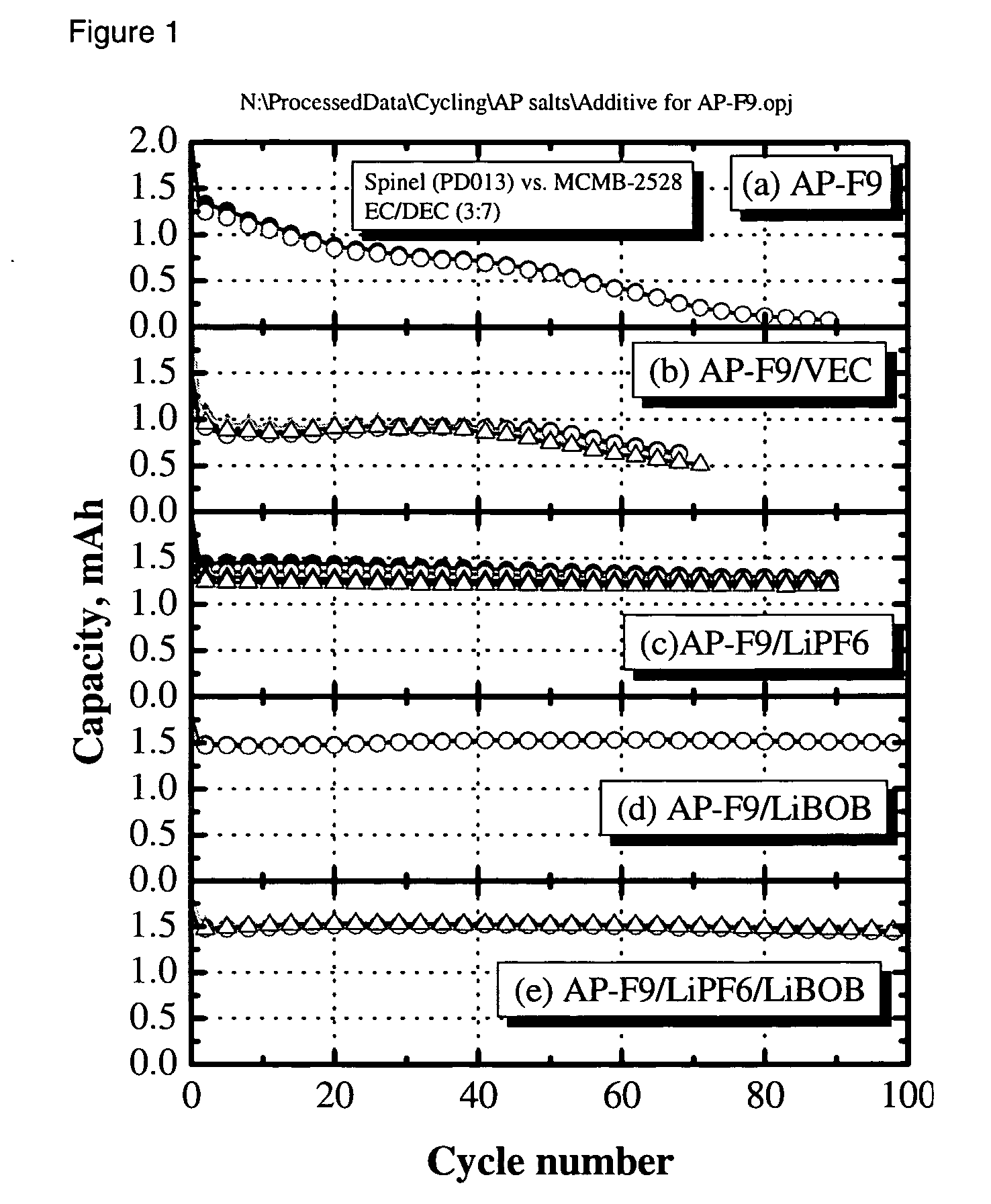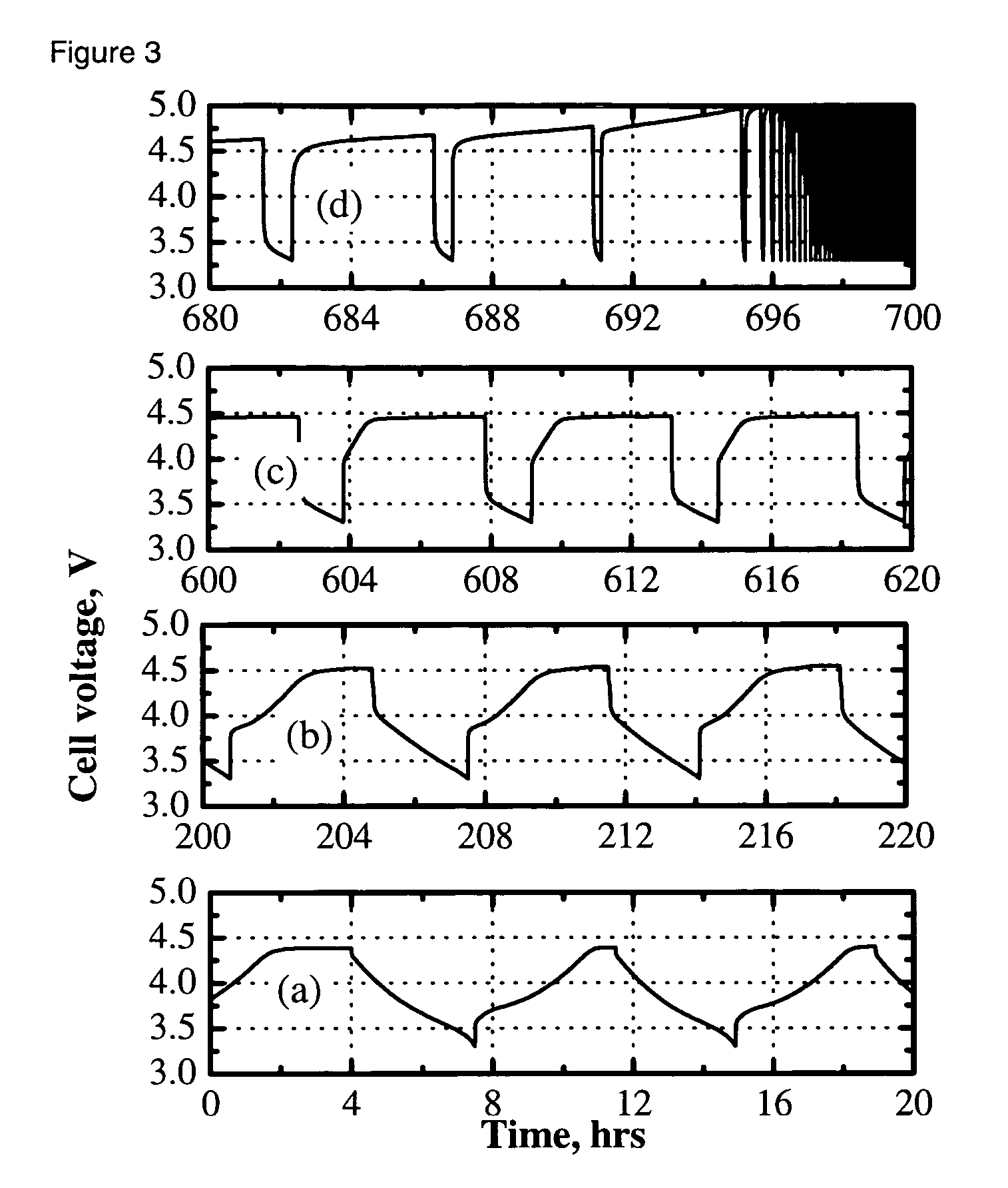Overcharge protection for electrochemical cells
- Summary
- Abstract
- Description
- Claims
- Application Information
AI Technical Summary
Benefits of technology
Problems solved by technology
Method used
Image
Examples
example 1
[0027] A coin type cell battery (diameter 20 mm, thickness 3.2 mm) comprised of a positive electrode, negative electrode, separator and electrolyte was prepared at room temperature. The positive electrode consists of LiMn2O4 (positive electrode active material) 84% by weight, carbon black (conducting agent) 4% by weight, SFG-6 graphite (conducting agent) 4% by weight, polyvinylidene fluoride (binder) 8% by weight on an aluminum foil current collector. The negative electrode consists of MCMB (anode active material) 92% by weight, polyvinylidene fluoride (binder) 8% by weight on a copper foil current collector. The separator, Celgard™ 3501, (available from Celgard Inc.) comprises the microporous polypropylene film.
[0028] The electrolyte was a 0.4 M solution of Li2B12F9H3 in 3:7 by weight EC:DEC. The cell was charged and discharged multiple times at a C / 3-rate constant current between 3.0 and 4.2 V. The capacity retention vs cycle number is shown in FIG. 1a. Rapid capacity fade was ob...
example 2
[0029] A cell was fabricated and cycled as in Example 1, with the exception that 1% vinylethylene carbonate was added to the electrolyte solution of 0.4 M Li2B12F9H3 in 3:7 by weight EC:DEC to help improve formation of a solid electrolyte interface at the negative electrode. As can be seen in FIG. 1b, capacity retention was improved over example 1; however, greater than 50% capacity loss was observed over 80 cycles and an initial irreversible capacity loss was also observed.
example 3
[0030] A cell was fabricated and cycled as in Example 1, with the exception that the electrolyte solution was 0.36 M Li2B12F9H3 and 0.08 M LiPF6 in 3:7 by weight EC:DEC. The LiPF6 was added to help improve formation of a solid electrolyte interface at the negative electrode. As can be seen in FIG. 1c, capacity retention was improved over Examples 1 and 2. Capacity fade was observed on cycling.
PUM
 Login to View More
Login to View More Abstract
Description
Claims
Application Information
 Login to View More
Login to View More - R&D
- Intellectual Property
- Life Sciences
- Materials
- Tech Scout
- Unparalleled Data Quality
- Higher Quality Content
- 60% Fewer Hallucinations
Browse by: Latest US Patents, China's latest patents, Technical Efficacy Thesaurus, Application Domain, Technology Topic, Popular Technical Reports.
© 2025 PatSnap. All rights reserved.Legal|Privacy policy|Modern Slavery Act Transparency Statement|Sitemap|About US| Contact US: help@patsnap.com



